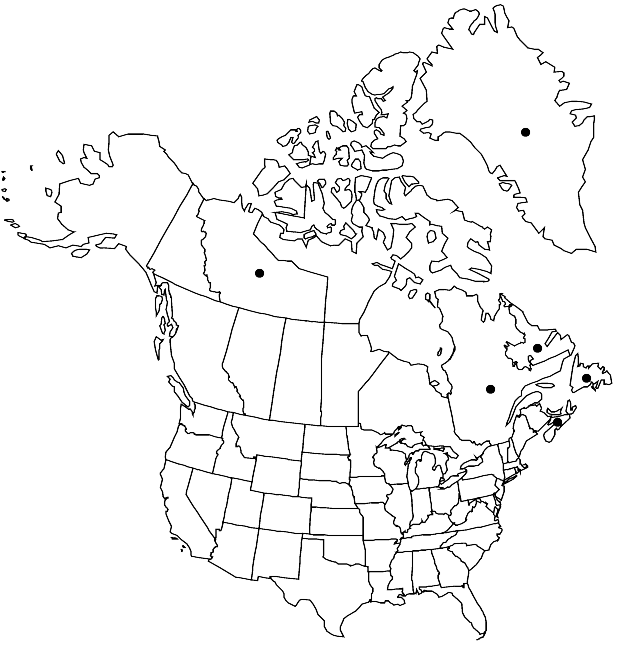Draba norvegica
Fl. Norveg. 2: 106. 1772.
Perennials; (cespitose); caudex branched (sometimes with persistent leaf remains); often scapose. Stems branched or unbranched, (0.2–)0.4–1.4(–2) dm, pubescent throughout, trichomes simple and 2–4-rayed, 0.2–0.5 mm. Basal leaves rosulate; petiolate; petiole (0–0.5 cm), ciliate throughout; blade oblanceolate to narrowly obovate or narrowly lanceolate, 0.4–2.1 cm × 1.5–7 mm, margins with 1–3 teeth on each side, (ciliate, trichomes simple and 2-rayed, 0.2–0.8 mm), surfaces pubescent abaxially with stalked, (2–)4(–6)-rayed trichomes, 0.1–0.4 mm, adaxially glabrous or pubescent, with simple and stalked, 2-rayed trichomes, 0.1–0.5 mm. Cauline leaves 0–3(–5); sessile; blade ovate to oblong, margins often dentate, (ciliate). Racemes 5–23-flowered, ebracteate or proximalmost 1(–3) flowers bracteate, considerably elongated in fruit; rachis slightly or not flexuous, pubescent as stem. Fruiting pedicels suberect to ascending (often appressed to rachis), straight, (1.5–)2.5–5(–9) mm, pubescent, trichomes simple and 2–4-rayed. Flowers: sepals ovate, 1.7–2.5 mm, pubescent, (trichomes simple and short-stalked, 2–4-rayed); petals white, spatulate, 2.5–4 × 1.7–2.5 mm; anthers ovate, 0.3–0.4 mm. Fruits (sometimes subappressed to rachis), oblong to lanceolate-elliptic, plane, flattened, 4–8 × 2–3 mm; valves glabrous or pubescent, trichomes simple and short-stalked, 2-rayed, 0.05–0.25 mm; ovules 18–26 per ovary; style (0.01–)0.1–0.4(–0.5) mm, (glabrous, stigma about as wide as style). Seeds oblong, 0.9–1.2 × 0.5–0.7 mm. 2n = 48.
Phenology: Flowering Jun–Aug.
Habitat: Rock outcrops and sea cliffs, talus, gravelly and sandy terraces, moist bluffs, turfy limestone shores
Elevation: 0-500 m
Distribution

Greenland, Nfld. and Labr., N.W.T., N.S., Que., Europe (Finland, Norway, n Russia, Scotland, Sweden), Atlantic Islands (Iceland).
Discussion
Draba norvegica is a highly variable hexaploid taxon and, as delimited herein, it probably represents two taxa with the same distribution and same chromosome number. It is related to hexaploid D. arctogena, from which it is distinguished by characteristics listed under 8. D. arctogena.
Draba norvegica was divided by O. E. Schulz (1927) into eight varieties, whereas R. C. Rollins (1993) recognized just two. In the latter treatment, var. clivicola is distinguished by having predominantly branched, appressed trichomes on stems proximally, lanceolate, glabrous fruits, and slender, erect-appressed pedicels. By contrast, var. norvegica is said to have predominantly simple, spreading trichomes on stems proximally, narrowly ovate to elliptical, glabrous or pubescent fruits, and stout, divaricately ascending pedicels. These differences are extremes of a continuum, and we agree with G. A. Mulligan (1970) in reducing D. clivicola to synonymy of D. norvegica. Rollins indicated that D. norvegica grows in Minnesota, but we have not seen any material from that state.
Draba norvegica is found in Europe in arctic and subarctic areas.
Selected References
None.